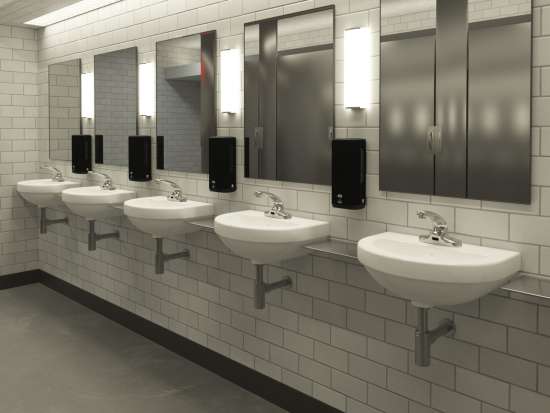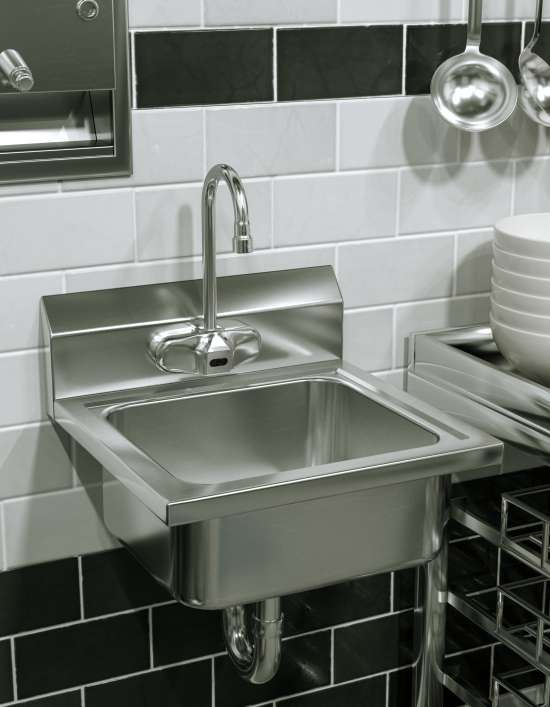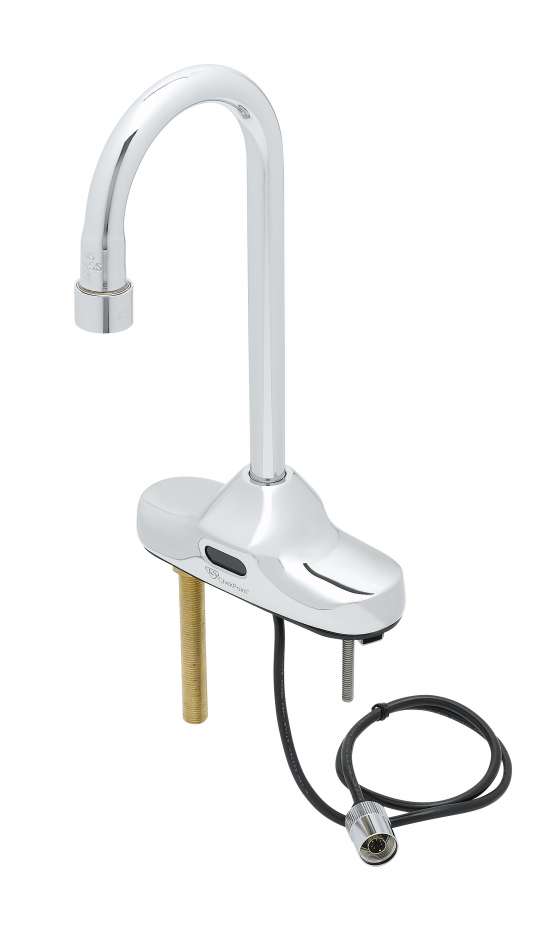Plumbing hygiene considerations in the wake of COVID-19 | 5 questions answered
Articles

Businesses of nearly every kind have begun to reopen their doors following the sweeping shutdown measures enacted to stop the spread of coronavirus. As they do, many are considering how best to accommodate a "new normal" in which health and hygiene measures are in sharp focus.
A major part of this focus is on plumbing fixtures, which are critical to supporting hygiene but can also pose their own risks and challenges as frequently touched surfaces.
Here we answer some commonly asked questions about how to improve faucet hygiene to support safe, sanitary environments.
Question: I'm hearing a lot about facilities switching to hands-free faucets. I'm interested, but I don't know the options and it seems overwhelming. What do I need to know?
Answer: Sensor faucets are a great option for going hands-free, preventing possible contamination from frequently touched faucet handles and providing users with a safer, more hygienic experience.

They also have the added benefit of saving water and money. Sensor faucets save approximately a gallon of water per handwash by running water only when needed.
Nearly any sink that currently has a manual faucet can be outfitted with a T&S sensor faucet instead.
To meet specific needs, T&S sensor faucets are available with a number of options to fit any application. Select either deck- or wall-mount as well as various mounting options - including available 4" center options for retrofitting in standard hole configurations - to accommodate your current sink design.
From there, options are available for above- or below-deck electronics, as well as a variety of body designs, nozzle styles and sizes, outlet devices, and multiple powering options.
But don't be overwhelmed by the choices. This step-by-step brochure is an anxiety-free way to customize the perfect solution.
Knee and foot pedal valves are another hands-free option, offering the simplicity of manual faucets with all the hands-free benefits an electronic sensor faucet provides.
Question: Are the options all equally relevant for all handwashing applications?
Answer: No, it's important to consider the setting in which faucets will be installed. Use should be key factor in determining what specific hands-free option is right for a particular application.
Facilities used primarily or exclusively for handwashing offer a prime opportunity to switch to sensor faucets. This can include public restroom sinks in schools, restaurants and public venues, shared facilities as in office buildings, as well as "behind the scenes" facilities like handwash sinks in kitchens, hospital nurses stations and the like.

In industrial settings like food processing plants or other facilities, a mechanical option like knee or foot pedal valves may be preferred over electronic sensor faucets so that equipment can be safely hosed down at the end of the day.
In healthcare or other sensitive settings, specialized outlet options may be preferred. (See the final question below for more details.)
Question: I see the benefits of electronic sensor faucets, but our facility currently only has manual faucets installed. How difficult is it to retrofit a sink from a manual faucet to a sensor faucet?
Answer: Retrofitting is easier than you might think.
For example, T&S' EC-3104, EC-3105 and EC-3107 sensor faucet families are specially designed for operators to replace existing deck- or wall-mounted, 4" center, manual two-hole faucets without the need to alter existing hole configurations.

T&S also supports retrofitting with easy-to-reference resources. We have step-by-step written and video installation guides for below-deck sensor faucets and similar written and video instructions for above-deck sensor faucets.
Question: What are antimicrobial coatings, and how can they help with hygiene?
Answer: Antimicrobial coatings are special clear coatings applied to the exterior of T&S faucet handles, which inhibit the growth of microorganisms and help prevent the transfer of germs to hands.
The antimicrobial coating provides a barrier to odor- and stain-causing microbes such as bacteria, molds, mildew and fungi. The coating doesn't kill microbes but rather creates an environment where they lose their ability to grow and flourish.
T&S offers manual faucet handles with antimicrobial coatings in wrist blade, lever and 4-arm handle designs, allowing for an easy retrofit of T&S manual faucets already installed in your facility.
Question: Can a faucet's outlet device have any impact on the spread of germs?
Answer: Yes. Faucets of all types are commonly fitted with aerators, which draw air into the water stream to create a soft water flow. This can pose a problem in settings where avoiding any potential contamination is critical, as airborne germs can be pulled straight into the water flow.
Laminar flow and non-aerated outlet devices produce a solid water stream free of air. For this reason, these options have long been staples in healthcare settings but are becoming increasingly popular in foodservice and handwashing applications for the same reasons, especially in the wake of the COVID-19 pandemic.
For a quick look at the hygiene options available from T&S, check out this infographic. And contact us with any questions about improving hygiene in your facility.







